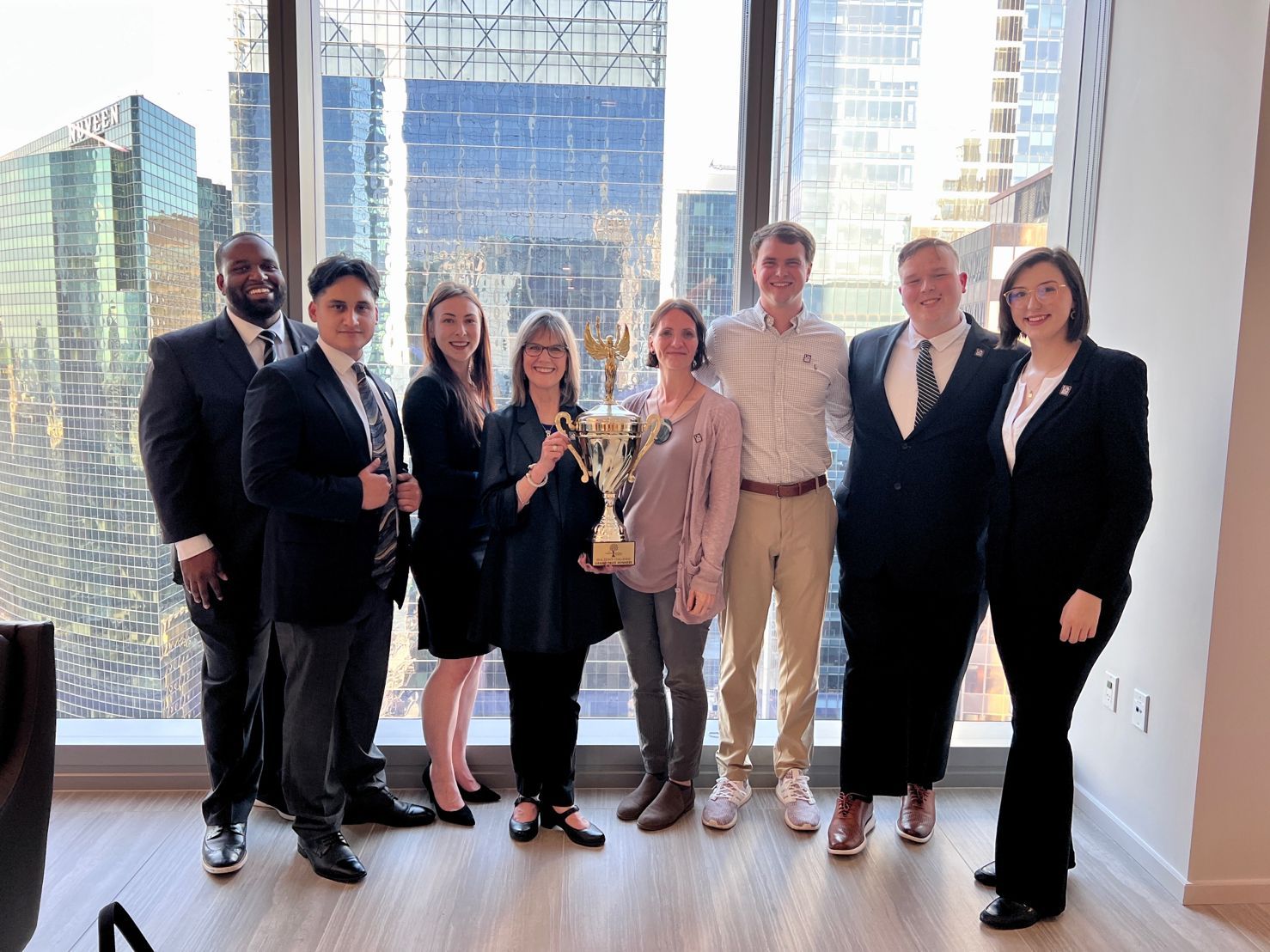UA Little Rock was the Undergraduate Division Winner of the Harold E. Eisenberg Foundation’s Annual Real Estate Challenge, which matches teams from selected universities in a competition focusing on a high-profile development/redevelopment project in the Chicago Metropolitan area.
UA Little Rock was one of a dozen teams competing in the high-profile competition, including Georgia State, Tulane, Loyola, Marquette, Michigan State, Ohio State, and the University of Illinois at Champaign-Urbana.
“When they said our name, I was in total disbelief that we had actually won,” said Lamar Townsend, a junior double major in finance-real estate and political science from Maumelle. “We were up against some very elite and highly resourced schools, so I thought our chances of winning were slim. However, I am honored and humbled that the Eisenberg Foundation gave us the opportunity to participate in this opportunity. It was truly a great experience.”
Each team is assigned the same case site and provided the same essential information and assumptions about the property. The students’ development plan must constitute a comprehensive analysis and conclusion of how to maximize the potential of the property from both a quantitative (financial) and qualitative (feasibility) standpoint.
“We decided to place an entertainment venue with retail and restaurants at the waterfront and then an office building and learning center on the interior of the island,” said Adison Cummings, a junior double majoring in architectural engineering and civil engineering from Texarkana. “We wanted to make that area a bustling hub to help bring back life into Goose Island.”
The award-winning students were all a part of the Real Estate Development course taught by Elizabeth Small, director of business networks and instructor of real estate development.
The winning students include Adison Cummings, Paige Goodale, David Lopez, Victoria Temples, and Lamar Townsend. Presenting teams were limited to five students, but UA Little Rock students Jake Anderson and Mika Berry were also members of the real estate class who worked on the project. In Chicago, the team was assisted by industry mentors Jenna Goebig and Siteng Ma.
“We had a wonderful teacher and mentors, coaching us through the process. They provided us with the connections we needed, as well as helping us to present,” said Paige Goodale, a senior double majoring in business finance and real estate. “I learned so much about development that I never expected to learn, like how to create a letter of intent, targeting a market audience, eliminating ideas that don’t work, contacting business owners, creating connections, the process of creating comps, and how financing and construction costs are created.”
Small added that her students went above and beyond on this project, letting nothing, not even a tornado, stand in their way.
“The students’ project paper was actually due at 4 p.m. March 31, the day the tornado struck Little Rock and Central Arkansas,” Small said. “While our Zoom meetings kept getting interrupted for students to take shelter, the paper got turned in with eight minutes to spare. One student, Jake Anderson, had to leave to check on his grandmother’s house in Little Rock, but his first question that evening was whether the paper got turned in on time. I’ve never seen such a dedicated group of students.”
The students traveled to Chicago on April 14 and got to tour Goose Island, the site of the redevelopment project for the Eisenberg Foundation’s Annual Real Estate Challenge, with Goebig. Their second industry mentor, Ma, is in China, but met with the group virtually to give them tips for their presentation. Remarkably, Ma is a graduate of Little Rock Central High School, and his parents have both worked at UA Little Rock in the past, leading to his desire to serve as a mentor to UA Little Rock’s team.
The team made their presentation to the Eisenberg Foundation on April 15, with four out of five students sporting business outfits they picked from UA Little Rock’s Trojan Career Closet. The students proposed what to build on a three-acre empty waterfront lot and a six-story abandoned storage building. They decided on a multi-use office building called “The Cove,” with space for an LA Fitness on the top floor, a STEM innovation hub, an art gallery, WeWork space, and rooftop green space for the abandoned building.
“We wanted to renovate the building with an adaptive reuse technique for sustainability reasons,” Townsend said. “The other waterfront site would be called ‘The Boatyard,’ and this was planned to be a destination entertainment venue with a 125,000 square-foot building with multiple vendors including Keg Grove Brewery and a space for a bowling/ arcade area. We also wanted a lot of green space along the waterfront, a water taxi stop, and space for an outdoor stage.”
Victoria Temples, a senior real estate and finance major from Little Rock, added that the two proposed mixed-use buildings would create a bustling community hub that would complement the area developing around it.
“A new casino, a nearly 3,000-unit apartment complex, and expansive river trail system are currently underway, so our developments greatly enhance the surrounding area,” Temples said. “Because we had a varied mix of uses, our development can be utilized 24/7, which is very important for the Chicago area.”


